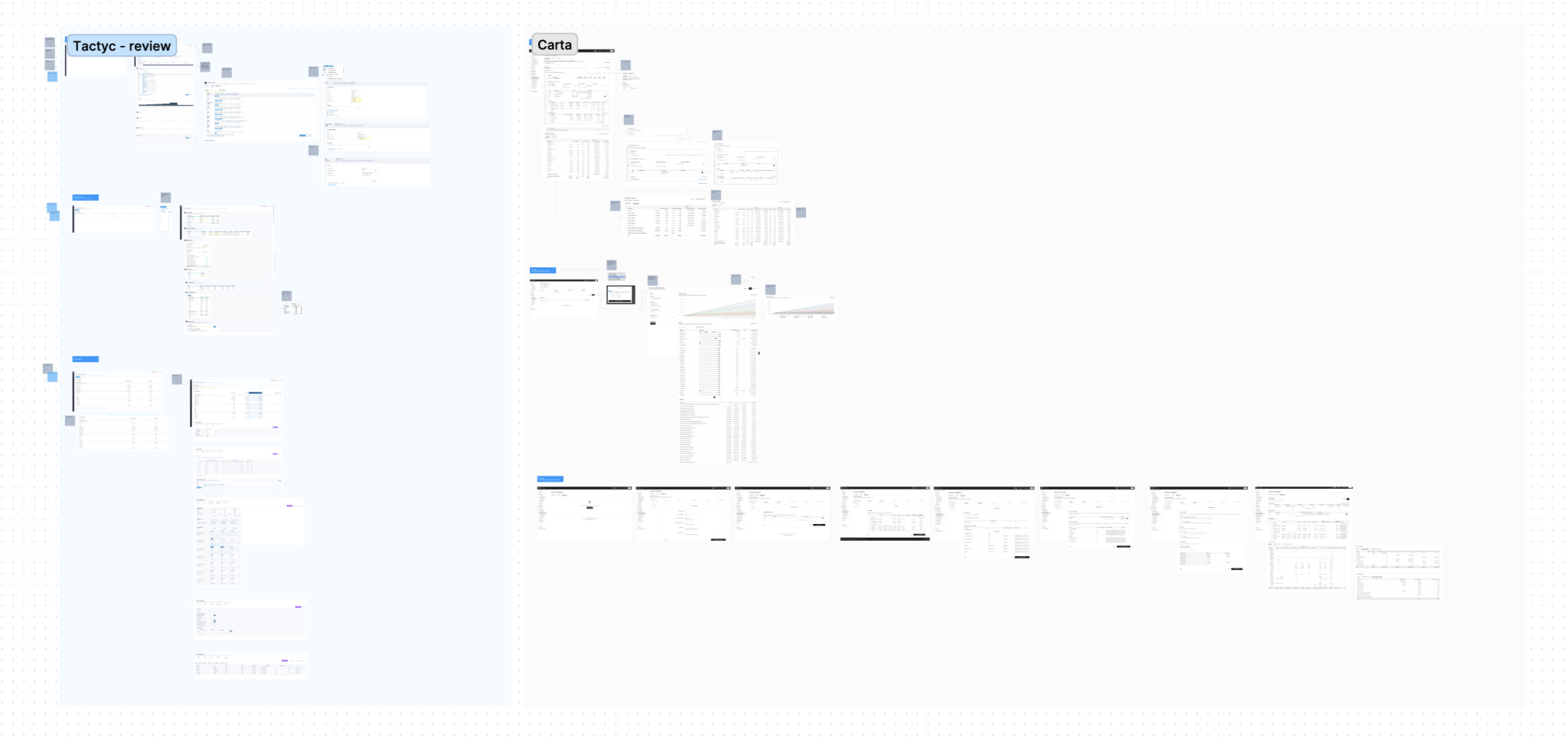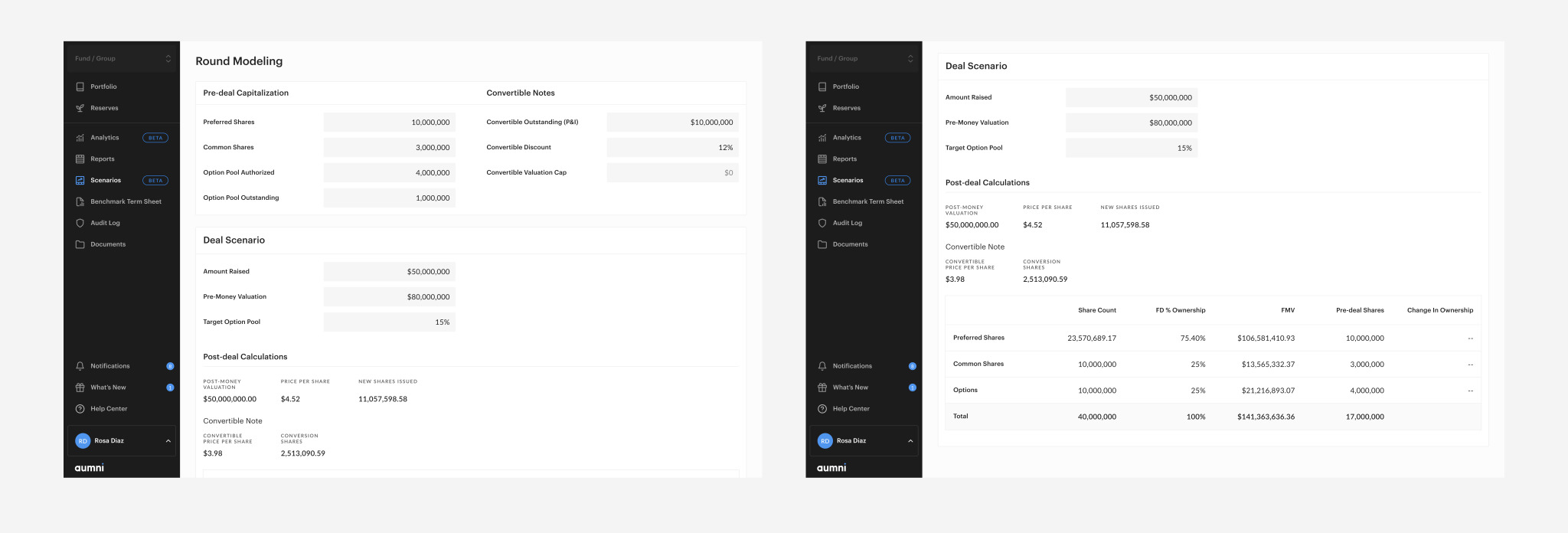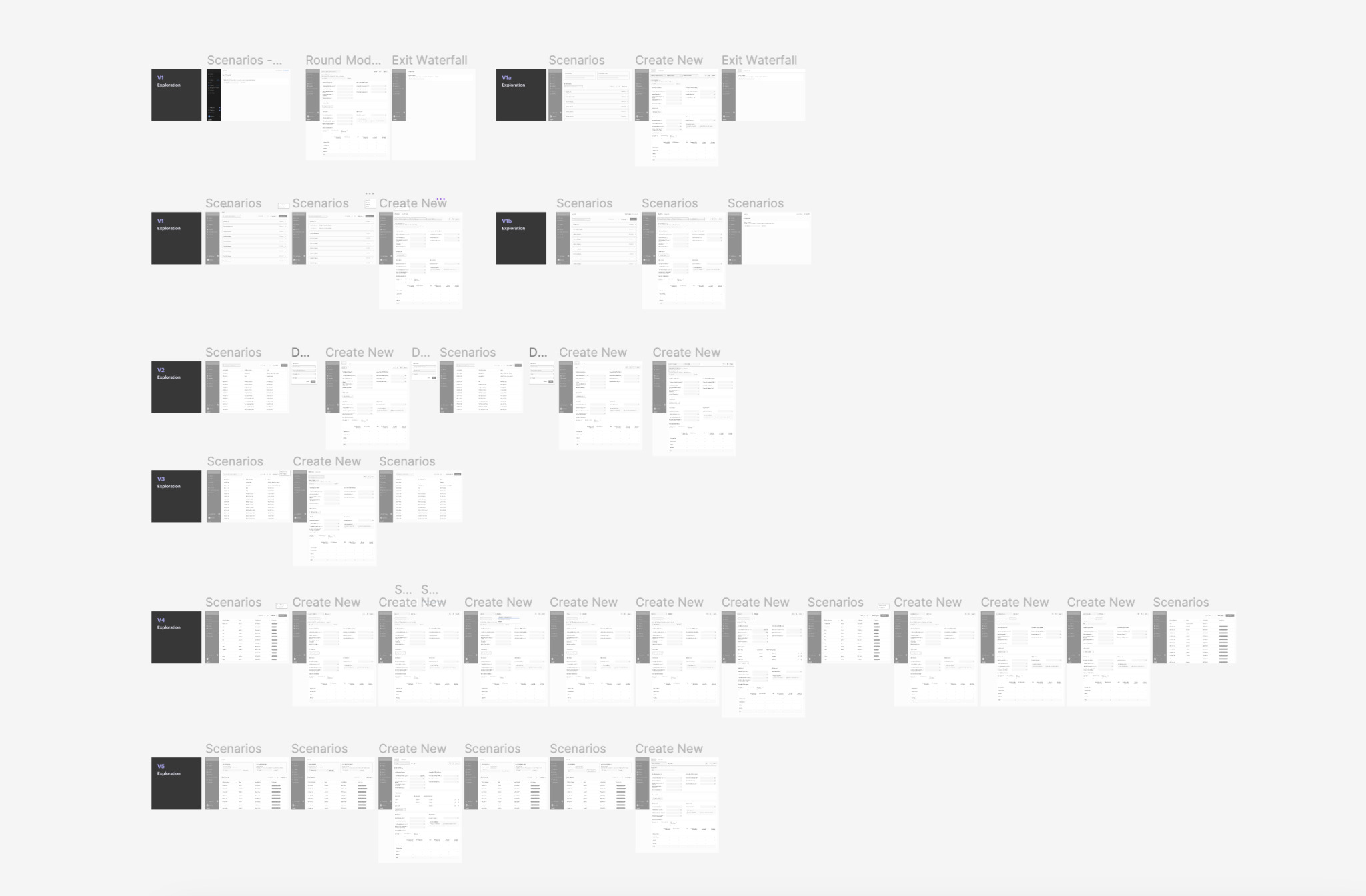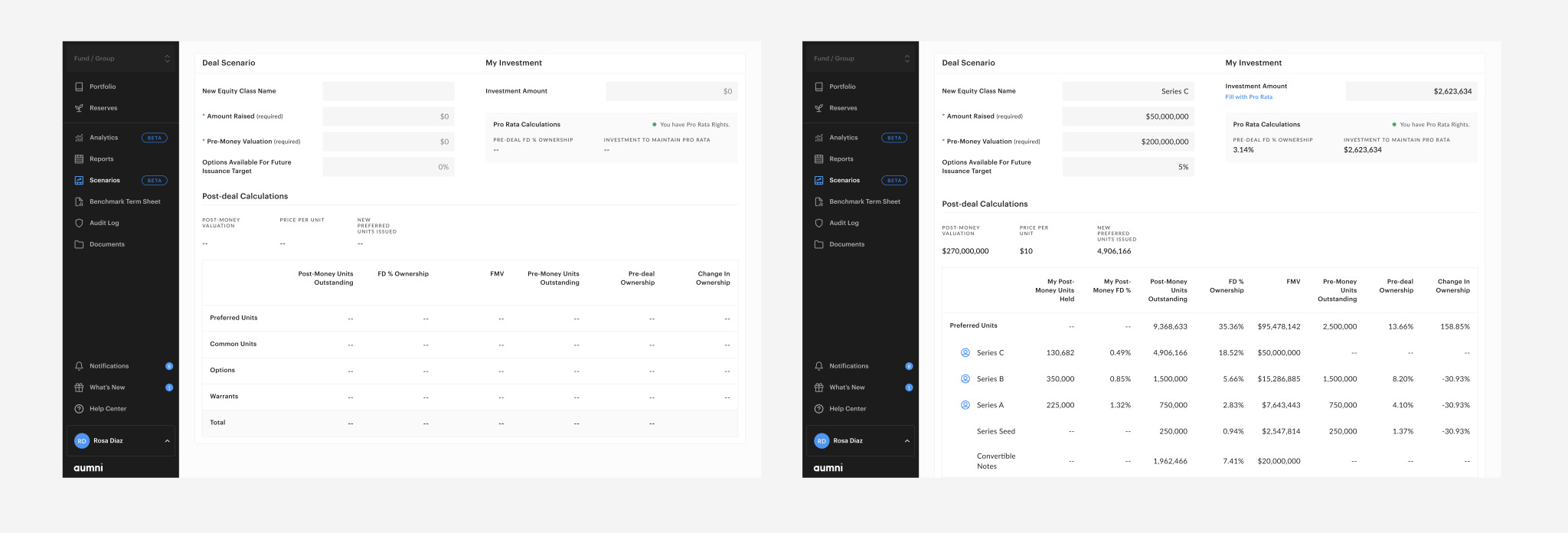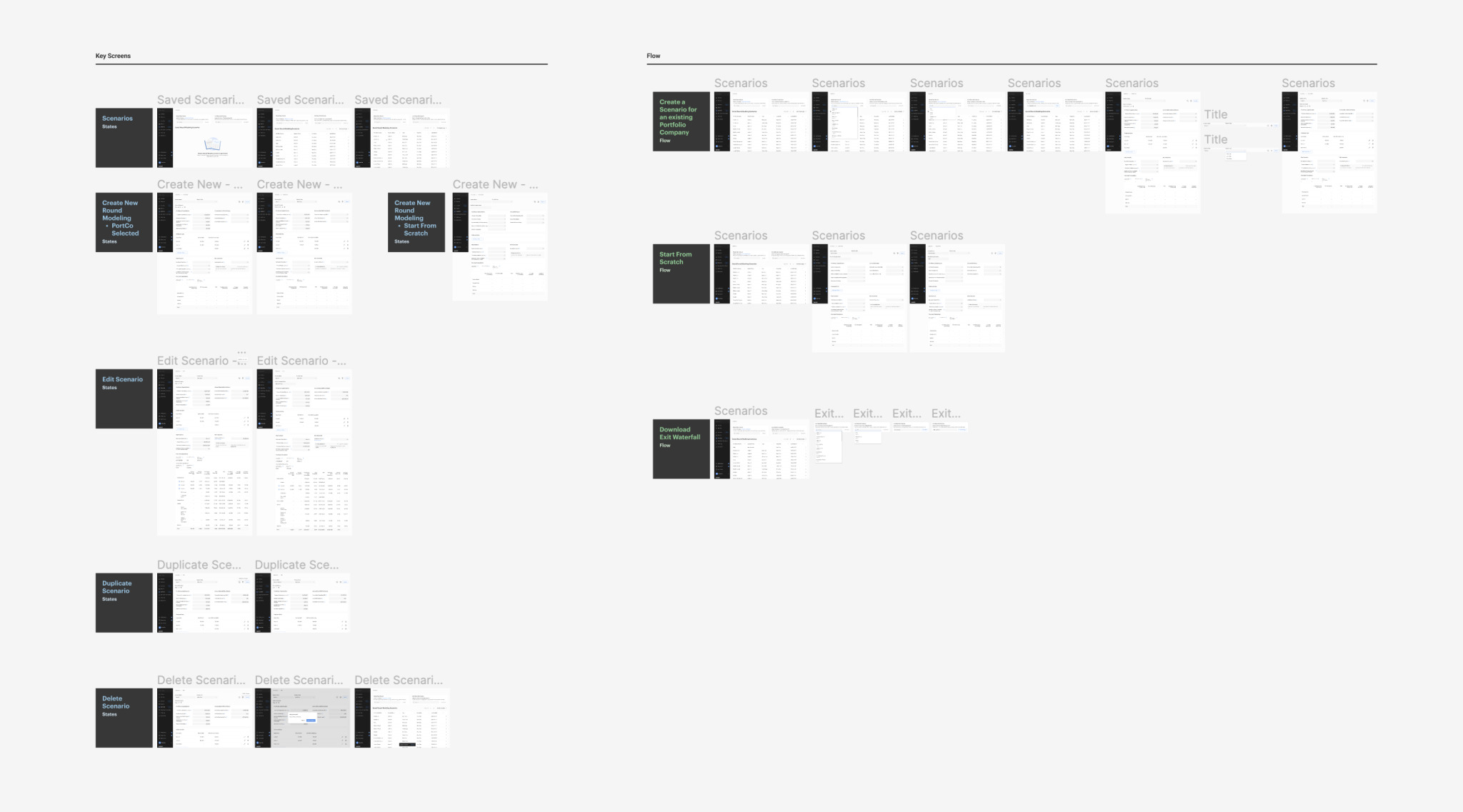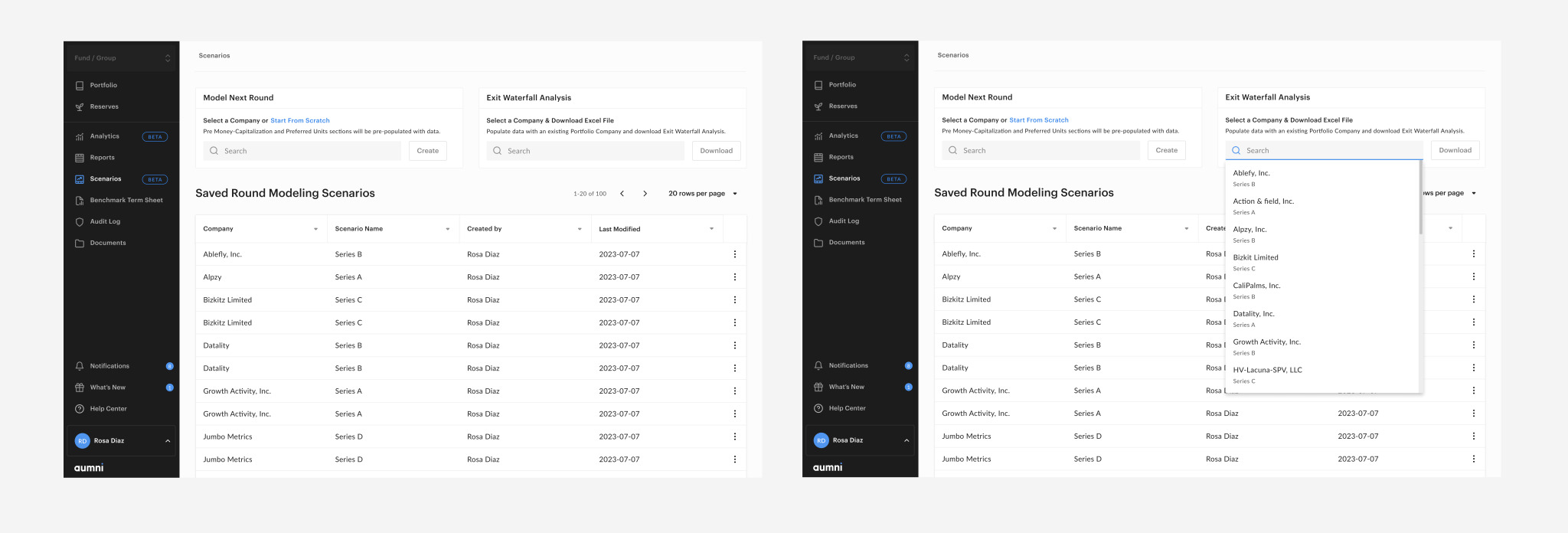Designing scenario modeling tools at Aumni
(acquired by JPMorgan)
Strategy
UX
UI
1 Product Manager
1 Engineering Manager
2 Engineering Squads
2 Subject Matter Experts
OVERVIEW
At Aumni, we work on tools that help investors analyze and monitor their portfolio. When considering an investment, investors model future financing rounds and exits. It is a time consuming and complex exercise, that is usually performed using Excel. Round modeling is used to determine how each round of financing might affect investor’s ownership and what do they need to invest to maintain a specific ownership percent. The outcome of this project was Aumni’s first scenario modeling tool, that Aumni’s users can now leverage in their workflows.
Understanding customer needs
We reached out to existing customers to understand how we can help with modeling each financing round. Scenario modeling is one of the most popular feature requests and we wanted to understand more about the specific user needs and pain points. We found out that smaller VC firms are usually extremely busy with sourcing new deals and managing their portfolio, and do not have time to build custom models. Some of our customers are currently using other software to work on scenarios, however they would prefer to just use one tool to save on subscriptions and to not have to log in to multiple platforms every day.
Competitor Analysis
To understand our main competitors better, I mapped out scenarios functionality and features. Our team went through the map and discussed the different data points and user flows to plan how to differentiate our offering. One of the biggest benefits of using Aumni is getting access to organized, aggregated legal and economic data. There is no need for user’s manual data entry, as we summarize and aggregate all of the data for our users. To start a scenario, a user needs to have an up-to-date version of the capitalization table for the investment they are evaluating. We already have this data in Aumni and we are able to significantly speed up the scenario modeling workflow.
Initial test - leveraging existing functionality to gauge interest in Scenarios
To further validate interest in round modeling functionality, we created a simple initial version of the tool, reusing existing functionality that was hidden in other area of the web app. We created a new navigation item called “Scenarios” and tracked the amount of visits to this new page. We received a high volume of visits to the page and requests to expand on the functionality, further confirming the need to build this tool for our users.
Aligning on use cases and functionality
I spent time with our Subject Matter Experts and Product Manager to review insights from initial discovery, write down the specific use cases, and map out future user flows. We started with round modeling, and decided to plan for adding more complex functionality in the future. Due to complexity of exit waterfall, we planned for a simple initial version of this type of tool. Users can generate an exit waterfall excel template, which will be pre-populated with Aumni data points. All formulas are included and the users will be able to make any changes. This gives us an opportunity to gather feedback, and carefully plan the future additions to scenario modeling functionality.
User Story Mapping: iterative designs, continuous testing and delivery
At Aumni, we work in 2 week sprints and aim to deliver a new feature or an improvement after each sprint. To plan each sprint, I work with my PM on user story mapping. Frequent releases help us gather user feedback frequently, and test in smaller increments. It is helpful to map out the full story and keep it in mind as I design each iteration.
Low Fidelity Explorations
I explore many different ideas before we select a solution. To quickly iterate on ideas, I created low fidelity prototypes that we then evaluate as a team. Here is an example of low fidelity explorations, when deciding on the saving scenarios experience.
KEY FEATURES
Start with existing capitalization data
The fastest way to build round modeling scenario in Aumni is to start with an existing portfolio company. Scenarios can be accessed either from a specific portfolio company page, or though Scenarios home - where a user can search for an existing investment. In case our users are evaluating a new investment, we have an option to “start from scratch”.
Understand how much do you need to invest to maintain your ownership percentage
At Aumni, all data points come from legal documents, which are then summarized and organized into an easy to reference display. To make filling out the scenario easier, we display pro rata rights information and help users determine how much do they need to invest to maintain the same ownership percentage. Users can quickly pre-fill the investment amount with recommended amount, by clicking “Fill with Pro Rata”. A lot of our users leverage this feature and speed up their workflow.
Save and organize your Scenarios
Once a Scenario is created, it can be saved and organized in one dashboard. Any scenario can be duplicated, to give the users an option to quickly create best and worst case scenarios. It also makes evaluating multiple term sheets easier, as you can create multiple scenarios for the same investment quickly. Our users can leverage the Analytics dashboard to get market data insights on typical amount raised and pre-money valuation for similar rounds. Each scenario can be saved and exported to share with the team.
Export Exit Waterfall Analysis
Users can pick an existing portfolio company to then export an excel exit waterfall template. Our team built out a template with formulas to make it easy for user to determine their exit equity value. Exit waterfall analysis is a complex process and frequently requires adding specific data points and formulas. To give our users the flexibility to make any changes we decided to start with the excel export.
What’s next
We continue to improve Scenarios and gather user feedback. Completion rate and number of saved scenarios are one of the key success metrics that we track. We meet with our customers after every iteration to continue to expand on the capabilities of Scenarios.
